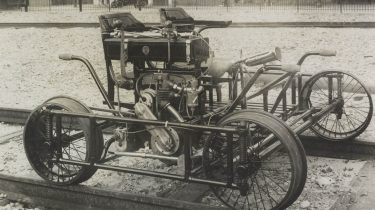
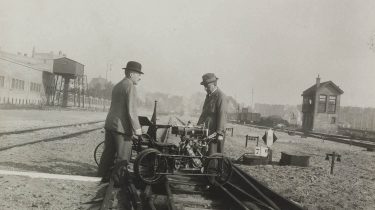
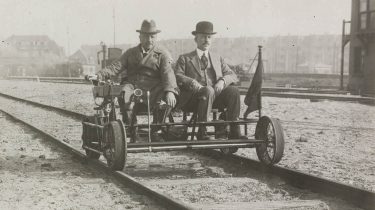
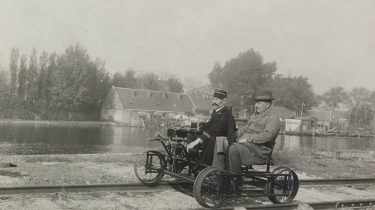
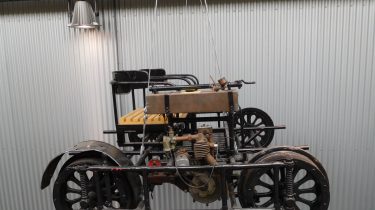
Type: M.G.
Simplex manufactured more than just bicycles and rail cycles: the company also sold motorized draisines. Some of these motorized draisines (also called speeders or railcars) were so big that they looked more like a tram than a motorized hand-car.
The example in the museum’s collection is modest in size: it can accommodate a maximum of two people and is equipped with a motor that generates only 2 horsepower. Simplex had developed this model for busier stretches of rail, where there was limited time to conduct inspections and so the supervisors had to get to the site in a hurry. Its engine makes this draisine relatively heavy, so other components were built to be as light as possible in order to reduce the total weight. A brochure from Simplex therefore warns against subjecting this model to ‘careless and rough’ treatment.
This draisine was used by the Noord-Brabantsch-Duitsche Spoorweg-Maatschappij (NBDS) around 1900. The NBDS operated a single rail line that connected Boxtel in the Netherlands with Germany and was used for international trains travelling from Germany to the port of Vlissingen. When World War I broke out, however, the rail line fell into disrepair. Nearly every stretch of rail itself has since disappeared; this draisine is the only one of the company’s vehicles to have survived. It was donated to the museum in 1959.



